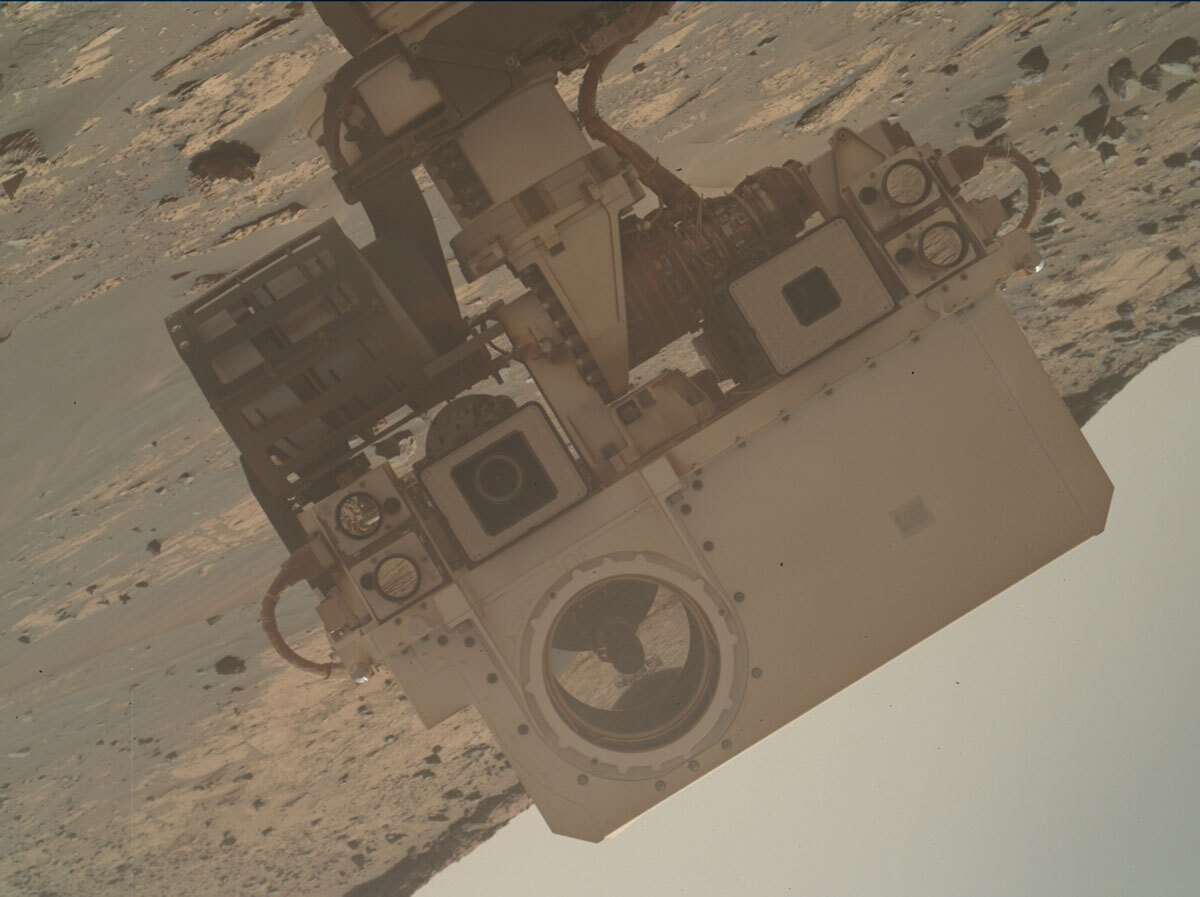2 min read

The plan did not fully execute over the weekend, so Curiosity is still sitting at the Zechstein drill location. We have already received data from the completed observations, which includes the most recent MAHLI selfie. In the above image, you can see the frame that includes Curiosity’s “head.” Don’t worry, Curiosity isn’t doing backflips! Instead, Curiosity appears upside down because of the direction the camera needs to be angled to take the perfect shot.
There are always more observations to take, so this extra time at Zechstein means bonus science. Our current location has great views of the pediment and several rocks that look like they tumbled down from either the pediment capping unit (known as the Stimson formation) or the layer that is directly beneath the Stimson. We already obtained observations of a few of these rocks, but with the extra time the team decided to target more of these blocks to see if they are similar or different than the previous targets. This includes “Cairngorm Stone,” a dark rock thought to be from the Stimson formation that was documented with a ChemCam LIBS observation and a Mastcam stereo mosaic in today’s plan. The “Carmyllie” target is a block that may be from the base of the pediment and it was documented with a Mastcam mosaic. Other observations include ChemCam LIBS targets at “Hessilhead” on bedrock that appears to have been diagenetically altered, and at “Cullaloe” on more standard bedrock.
The primary activity in this 3-sol plan is the first part of the SAM derivatization experiment of the Rock Hall sample. This sample has been in a doggy bag for 3 years, so it will be exciting to learn what it can tell us about the Vera Rubin ridge where it was taken. Data from this experiment will be used to better understand organic preservation in the presence of mixed iron oxides and clays.
Written by Kristen Bennett, Planetary Geologist at USGS Astrogeology Science Center







